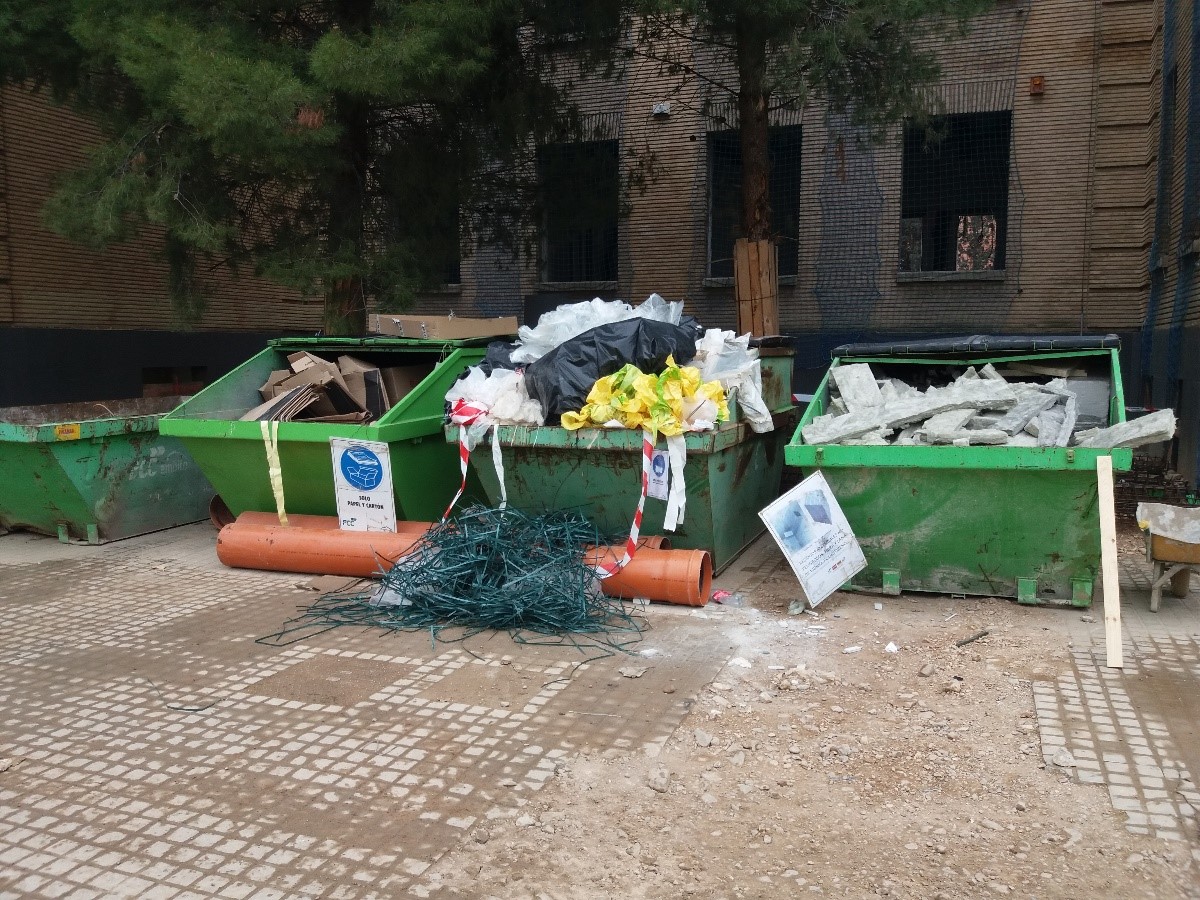Classification of waste generated during the refurbishment and extension of the Arts Faculty at the University of Zaragoza
Description of the Environmental Measure.
Needs identified:
The purpose of the project is the refurbishment and extensión of the Faculty of Philology and Literatureat the University of Zaragoza.
The planned action includes demolishing the philology building and replacing it with a new building for the department. The central faculty building (designed by the architect Regino Borobio and catalogued under protection level B for its architectural interest in the Zaragoza urban-development plan) is also being fully refurbished, maintaining the building’s volume and floor slabs while carrying out a large amount of quasi-manual demolition work inside the building.
The project was under ambitious requirements:
- The BREEAM certification, in the “Waste” category, assigns one point at the final classification if more than 80% of the building waste is recovered, achieving “exemplary level” if 95% is recovered.
- Another requirement for BREEAM certification is to elaborate the pre-building audit, that is intended to “provide precise information on the destination of the waste generated on site”. The conclusion for this project was that the Project had the potential to reuse and recycle approximately 97% of its building and demolition waste (considering that no reuse or recycling operations are planned for any hazardous or household waste).
- The waste-management plan considered the possibility of applying reuse and recycling operations for practically all BDW.
Solutions adopted:
The contracting of both the demolition work on the Philology building and the partial demolition of the central building of the Faculty, as well as the earthmoving work, were carried out following these criteria, so that, initially, total segregation of the resulting waste was required according to the type of waste and, above all, the possibility of future recovery; and, later, the management of this waste was included, giving priority to its recovery.
All non-hazardous waste from the demolition work on the buildings was handed over to different managers (depending on its nature) who certified its recovery. For its part, the company in charge of the excavations certified the use of the earth resulting from the excavations in other backfilling works.
At the same time, the site provided sufficient containers to segregate the waste resulting from the project's operations, the management of which was contracted to ensure its recovery.
Results:
In both construction and demolition work, management was certified, recycling approximately 100% of the construction site's CDW, with the exception of hazardous waste and waste considered as domestic, recovering it and thus avoiding its disposal in landfill.









